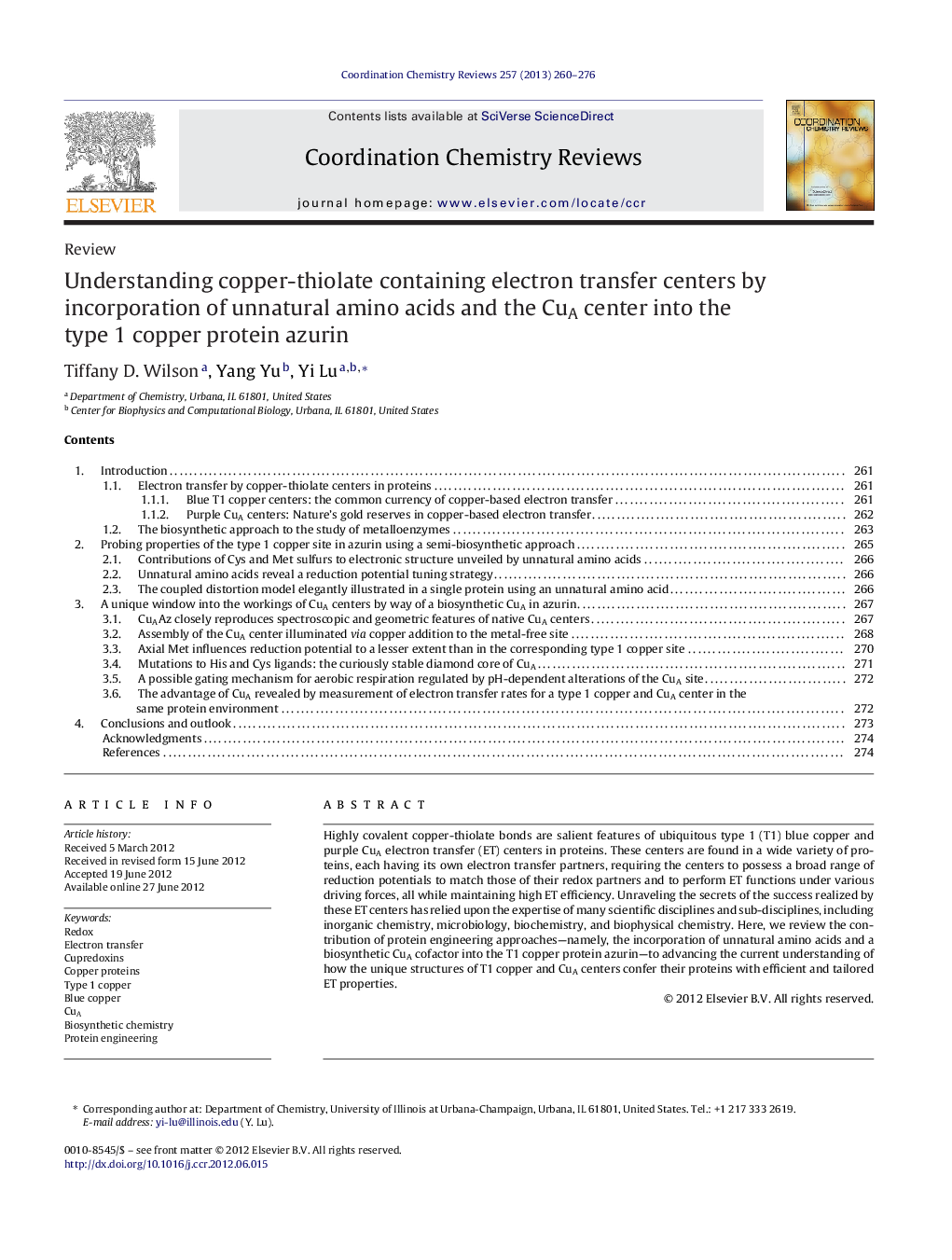| Article ID | Journal | Published Year | Pages | File Type |
|---|---|---|---|---|
| 1300113 | Coordination Chemistry Reviews | 2013 | 17 Pages |
Highly covalent copper-thiolate bonds are salient features of ubiquitous type 1 (T1) blue copper and purple CuA electron transfer (ET) centers in proteins. These centers are found in a wide variety of proteins, each having its own electron transfer partners, requiring the centers to possess a broad range of reduction potentials to match those of their redox partners and to perform ET functions under various driving forces, all while maintaining high ET efficiency. Unraveling the secrets of the success realized by these ET centers has relied upon the expertise of many scientific disciplines and sub-disciplines, including inorganic chemistry, microbiology, biochemistry, and biophysical chemistry. Here, we review the contribution of protein engineering approaches—namely, the incorporation of unnatural amino acids and a biosynthetic CuA cofactor into the T1 copper protein azurin—to advancing the current understanding of how the unique structures of T1 copper and CuA centers confer their proteins with efficient and tailored ET properties.
► We review two biosynthetic approaches in understanding type 1 blue Cu and CuA centers. ► Introducing unnatural amino acids in azurin reveals factors in tuning redox potentials. ► Grafting CuA center into azurin allows study of in vitro assembly of its CuA center. ► The system allows direct comparison of ET efficiency of blue Cu and CuA centers.
